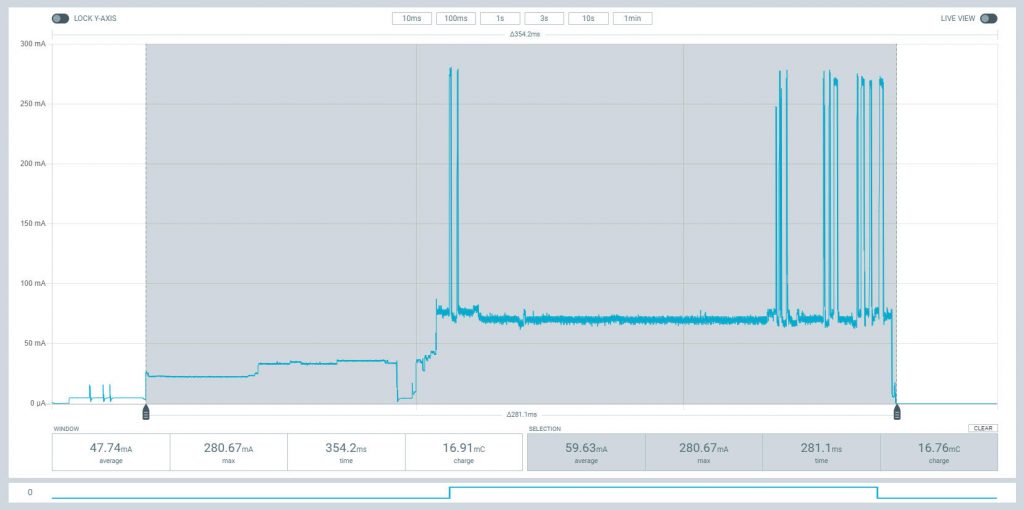7-Feb-22

This is a single wake from deep-sleep event in the Arduino environment.
Reset pin is pulsed, ESP wakes up, collects data, WiFi connects, sends data by UDP, then back to deep-sleep.
The greyed area starts with the ESP reset pin being activated and ends when the ESP goes back to sleep, in this case (above pic) it takes about 280ms so it is not completely unrealistic to use ESP8266 devices on batteries (many people do). Between 269 and 274ms is fairly typical for me on my home network. Here is 12-hours of connect-times graph
The times are NOT by using millis() as the internal timebase does not start till some time after the reset.
The low-power item before the ESP-reset is a companion-processor (ATtiny1614) that does a bunch of background stuff. It is responsible for waking the ESP and handing over its collected data for transmission. It also handles the DS18B20 for temperature because the ESP is not awake for long enough.
At the bottom of the image, the blue logic trace is the actual Arduino sketch-active time. 1st instruction in sketch sets it high, goes low after initiating the UDP transmission.
There is no RF-Cal on wake so startup is quicker. In my use, every 100th wake, an RF-cal is included.
From reset to start of sketch is (in this case) 113ms. This is dead-time for the user while the ESP is initialised up to the point where the boot process hands over to the user sketch. WiFi becomes connected just after the second-last current peak, so from sketch start to that point, do stuff!
By the time your WiFi connection is active your data should be all packaged-up and ready to send. There is about 160ms of actual usable sketch time available before WiFi is connected. Use it wisely!
With everything sleeping (ESP8266 and ATtiny1614) the standby current is about 78uA. Still a bit high. Now I have my Nordic PPK2 I can try and optimise this so as I modify the software I can actually see the difference.
11-Feb-22: After a bit of tweaking, standby is now down to 22uA. Not bad for an ESP and ATtiny together (and support circuitry).
